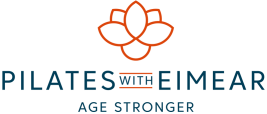
 Did you know you move your head minutely approx 600 times per hour?!
Did you know you move your head minutely approx 600 times per hour?!
Your skull is heavy (about 5kg) and ideally should balance directly above the shoulders with a natural curve of the cervical spine. This is the case whether you are:
- standing up
- lying on your back (either flat on the mat OR with head + shoulders lifted off (in, say, Ab Prep)
- lying on your tummy (with head down or with head + shoulders lifted off (in, say, Breast Stroke 1)
In fact, most of us have our heads slightly forward in everyday life (bet you do as you’re reading this on your screen!!).
Pilates attempts to make you notice your posture, to get you to use the right muscles to move your head with integrity in order to achieve dynamic stability and neutral alignment.
The two photos (courtesy www.merrithew.com) here show the ideal (and incorrect!!) head placement in both Ab Prep and in Breast Stroke 1 – two moves we do regularly in class. These exercises are the blueprint for so many others; if you get your head placement right in these, you’ll be set up for many other moves.
NOTE: Lifting the head and shoulders off the mat is very hard for some people. This may be because they have a very forward head position AND/OR very weak neck flexors. Supporting the head with the hands is the best option.
The other important thing is not to over-use the big muscles of the neck, the sternocleidomastoid or scalenes. The ‘head nod’ exercise is basic to recruiting the deep segmental neck flexor muscles before you lift your head and shoulders off the mat. The head nod is what I often refer to as ‘lengthening the back of your neck’ or ‘bringing your chin a bit closer to your chest’.
REMEMBER: if you feel neck strain, your position needs adjustment. Never work through bad pain. Bring the head down, relax and try again! And sometimes, it’s better to leave the head down altogether! Your best is good enough.
